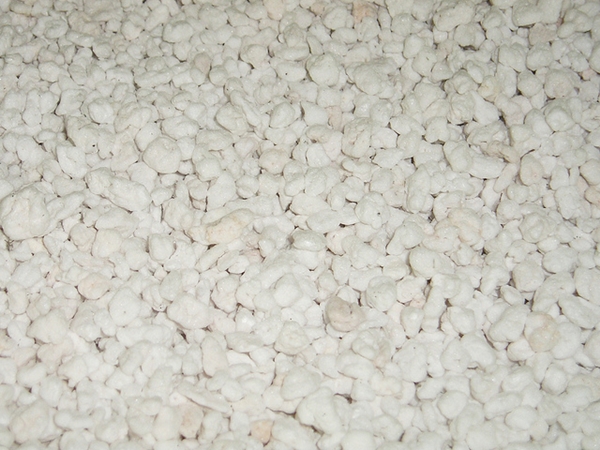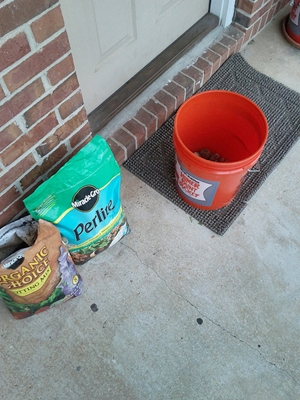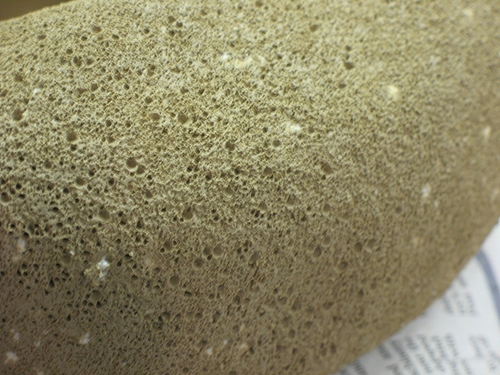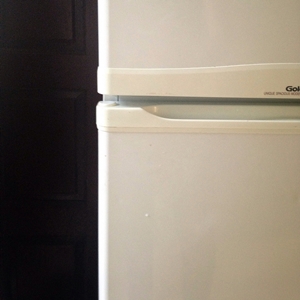 This is how Perlite looks up close – Image Courtesy: Maja Dumat
This is how Perlite looks up close – Image Courtesy: Maja Dumat
Perlite insulation is made from volcanic rock, as these rocks are known to have a higher amount of water content. This extra quantity of water content allows rocks such as these to produce an extremely high number of air pockets whenever the rocks are heated. This in turn makes perlite a fantastic material for insulation purposes, as it has far higher levels of thermal resistance. The appearance of perlite in its most basic form is generally as white granules or pellets. This post will provide with a little more information about perlite and its uses.
Perlite in the Home

Perlite is commonly used in the home, typically to stop the flow of unwanted air in the foundations, walls and roof. Many attics will use loose-fill perlite as an insulator. Perlite not only happens to be thermally resistant, it also has the ability to block out unwanted sounds, thus ensuring the level of noise coming into your home is lessened, and therefore making it quieter indoors. Perlite has become increasingly popular as a form of insulation because it has many qualities not found in other forms of insulation. One such quality is the fact that it is extremely fire resistant and it has the ability to slow down the spread of flames or heat from a fire.
If you are someone who is particularly interested in energy efficiency within the home, or any building for that matter, then perlite insulation is a must. If your home has been properly installed with perlite insulation, you should find that this can dramatically reduce the amount of money you spend on your energy bills, for the costs of both heating and cooling. In addition to this, due to the fact that you are wasting far less energy, you are also helping to protect the environment. Let’s not forget that if your property is properly insulated, you are also likely to feel far more comfortable at home, as you can pretty much eliminate cold gusts or drafts from entering your home.
Different Types of Perlite Insulation

There are various forms of perlite insulation. One popular method will see granules of perlite added to a concrete mixture, which in turn will improve the insulation efficiency of the concrete as soon as it dries. Perlite is also often used in loose-fill form, such as to fill the cavities typically found in blocks of masonry. There are even perlite manufacturers who will press it into sheets and then these sheets can be added to the walls and ceilings around your home instead of the usual type of foam insulation you may be more used to seeing.
Other Uses of Perlite

Perlite has uses in many other industries as well and is typically used for applications or materials which operate at extremely low temperatures. A prime example of this is the linings of refrigerators and for vehicles which carry frozen goods, etc. Perlite is also used in medical research and cryogenics. The main reason that perlite is so adaptable and therefore able to be used in a variety of industries is because it is very light weight and the fact that it only contains inorganic materials. This means that perlite is resistant to a vast array of things, including pests, rot and moisture.
Jessie James is an employee at Worldwide Perlite Services, leading perlite suppliers. Jessie loves reading novels and sketching.
Leave a Reply